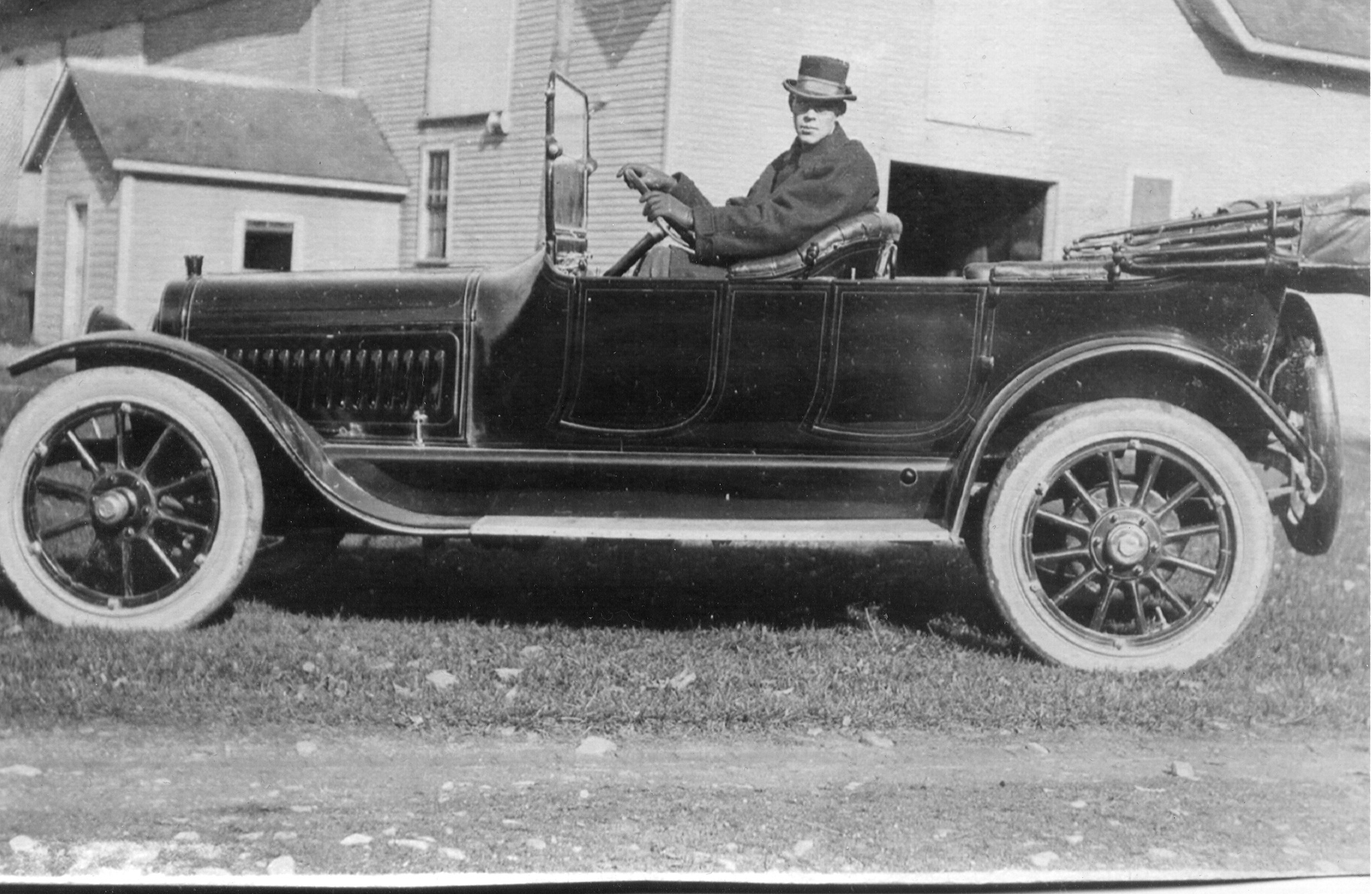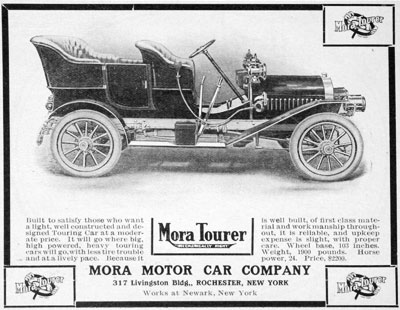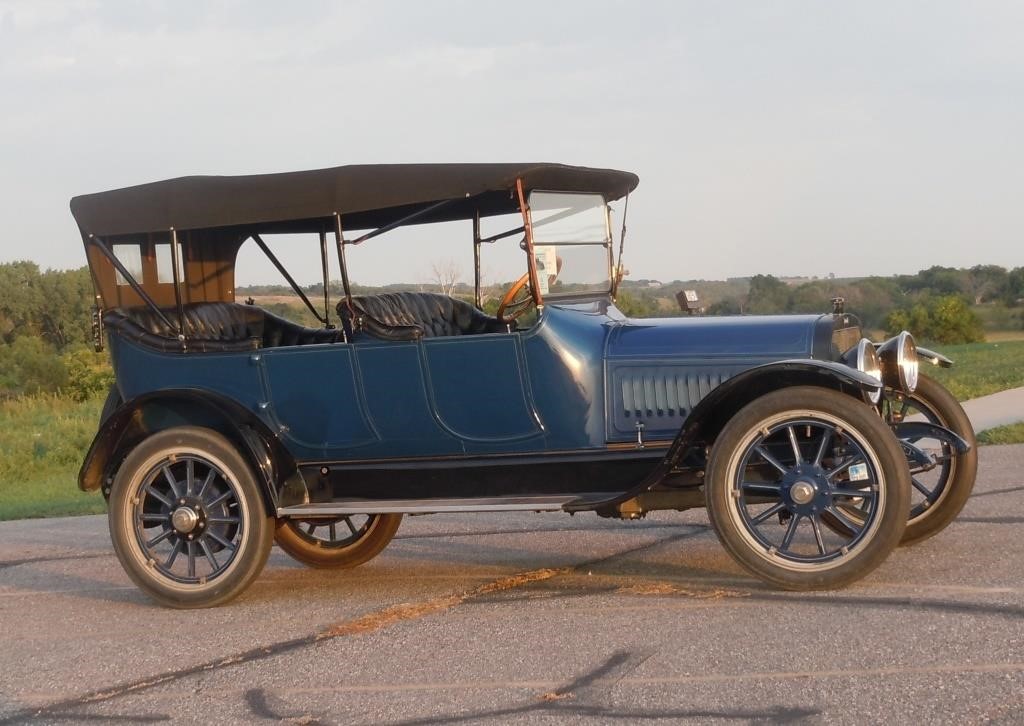Mr. Huntley's 1914 Chandler Light Six
Posted on Thu 09 March 2023 in cars
Identifying the car in an old photo
One of the greatest parts of living in an old house is identifying the history of its occupants. In this photo, we see A.E. Huntley, the original owner of our house, looking rather dapper in his car. His grandaughter shared the photo with us a few years after we bought the house. While she knew who was in the photo, and where it was taken, she had no other information. I thought it would be great to identify the car, and therefore the age of the photo. But, the picture didn't give me much to go on.
Guessing a date based on the age of our house, a rough age for Mr. Huntley, and the general styling of the car, I figured the photo would have been taken sometime in the early 1900s, most likely in the teens or early 20s. Even under a magnifying glass, I could not make out any identifying marks on the car. There are no medallions, name plates, or really hardly any identifying features to the car. The shape of the doors is perhaps the most distinctive feature.
I started searching with the most well-known cars of the era -- Ford, Chevrolet, etc. Nothing looked close. While Mr. Huntley was a successful dairy farmer, he was not wealthy. He certainly could not have afforded a Cord, Duesenberg, Pierce Arrow, etc. (Of course, it was fun looking at photos of those gorgeous vehicles.) Eventually I moved on to lesser-known and regional makers, of which there were many.
I found out that a few car makers were based in the Rochester area in the early 1900s, including Seldon (PDF), Foster, Cunningham, and Jenkins. One very promising candidate was the Mora, built not too far down the road in Newark, NY.
Look at those doors! But the overall shape was not correct. Also, the model year of that car is 1907, which was about a decade older than my guess on the photo's age. Still, I kept on researching Mora cars. There's not a lot of info or photos online. From what I found though, they made cars that looked like Mr. Huntley's.
I tried asking friends and fellow-car enthusiasts, including co-workers at an automotive tech business I used to work for. My posts on Facebook and Reddit got me various answers, but none were very helpful (or correct). I didn't give up, but I did put the search on the back-burnder. The other day, someone replied to one of my rather old Reddit posts and pointed me to the Chandler. A little googling and bingo!
The 1914 Chandler Light Six is a dead-ringer for Mr. Huntley's car. Compare the vents on the side of the hood, shape of the seats, spoke patterns on the wheels, the running board shape, and of course, those doors.
The Chandler Motor Car Company
The Chandler Motor Car Company was located in Cleveland, OH. It was formed in 1913 by executives and other employees of the Lozier Motor Company. Lozier made high-end cars, in fact, some of the most expensive US-made cars of their day. Frederick C. Chandler, former-chief designer at Lozier, wanted to build quality mid-priced cars. So he left Lozier and started his own company.
Chandler sold a 1914 six-cylinder touring car, probably what Mr. Huntley owned, for $1,785. According to the CPI inflation calculator, that would be approximately $53,700 in 2023 dollars. I have no idea if he bought it new or used, though the car looks to be in great condition in the photo. I think it's very interesting that he bought a car from an Ohio manufacturer when there were quite a few makers of similar-class cars much closer to home.
Chandler had a decent run, and by 1919 was outselling Nash and Oldsmobile. They ranked seventh in export sales among U.S. automakers that year. Unfortunately, they expanded too quickly, ran out of money, and sold to Hupp Motors. While Hupp promised to keep the Chandler lines going, about a year later they shut down Chandler and instead used their factories to produce Hupp vehicles.
I'll probably never know what happened to this car. He probably sold it or traded it in. Maybe it was lost in the fire that destroyed the barn. There are just a few Chandlers known to still exist. If this one were still around, it would be worth more than our house.


